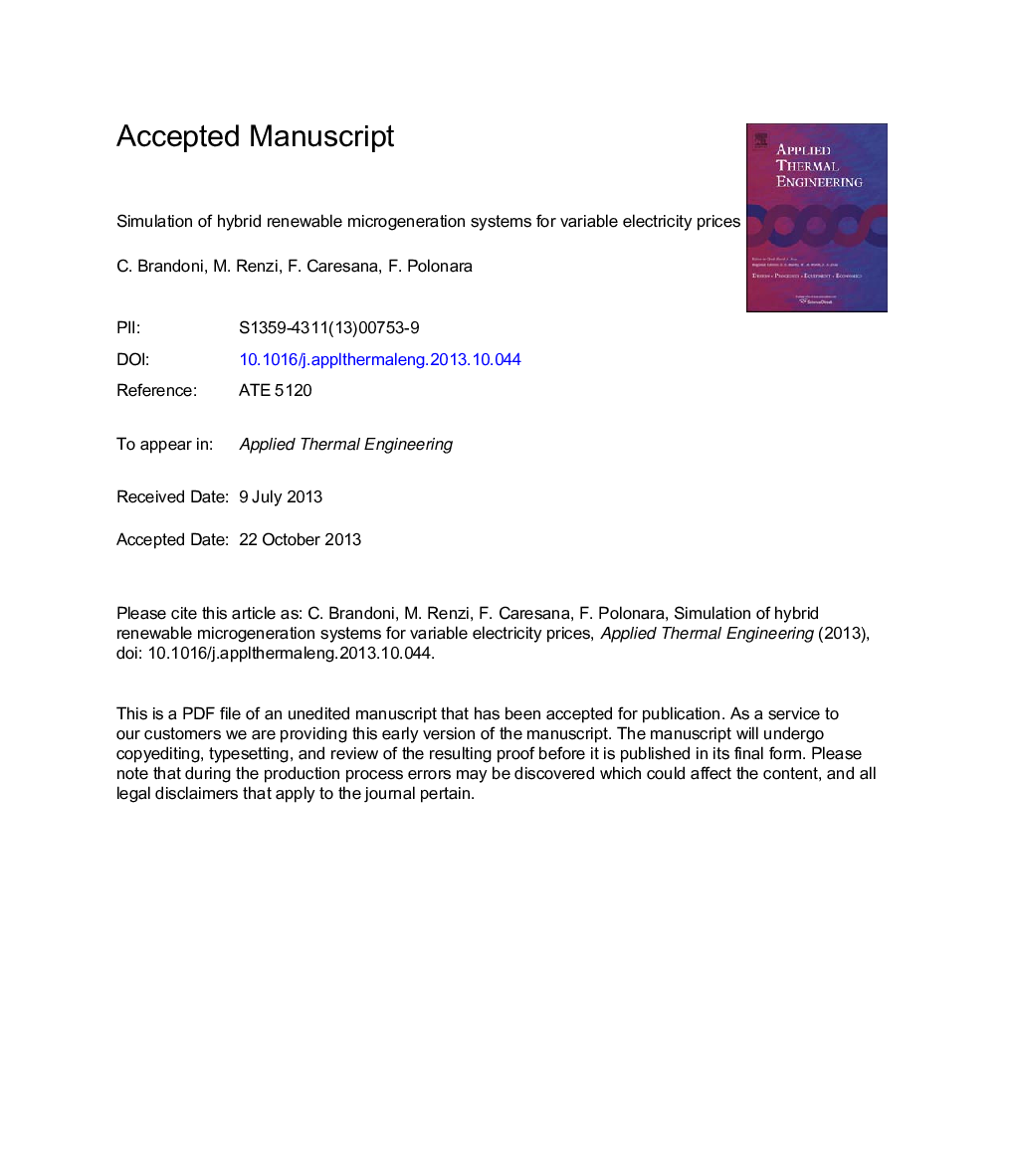| Article ID | Journal | Published Year | Pages | File Type |
|---|---|---|---|---|
| 10390404 | Applied Thermal Engineering | 2014 | 40 Pages |
Abstract
This paper addresses a hybrid renewable system that consists of a micro-Combined Cooling Heat and Power (CCHP) unit and a solar energy conversion device. In addition to a traditional PV system, a High Concentrator Photovoltaic (HCPV) device, the design of which is suitable for building integration application, was also modelled and embedded in the hybrid system. The work identifies the optimal management strategies for the hybrid renewable system in an effort to minimise the primary energy usage, the carbon dioxide emissions and the operational costs for variable electricity prices that result from the day-ahead electricity market. An “ad hoc” model describes the performance of the HCPV module, PV and Internal Combustion Engine, whilst the other units were simulated based on their main characteristic parameters. The developed algorithm was applied to three different building typologies. The results indicate that the best configuration is the hybrid renewable system with PV, which can provide a yearly primary energy reduction of between 20% and 30% compared to separate production. The hybrid renewable system with HCPV becomes competitive with the PV technology when the level of solar radiation is high.
Keywords
Related Topics
Physical Sciences and Engineering
Chemical Engineering
Fluid Flow and Transfer Processes
Authors
C. Brandoni, M. Renzi, F. Caresana, F. Polonara,
